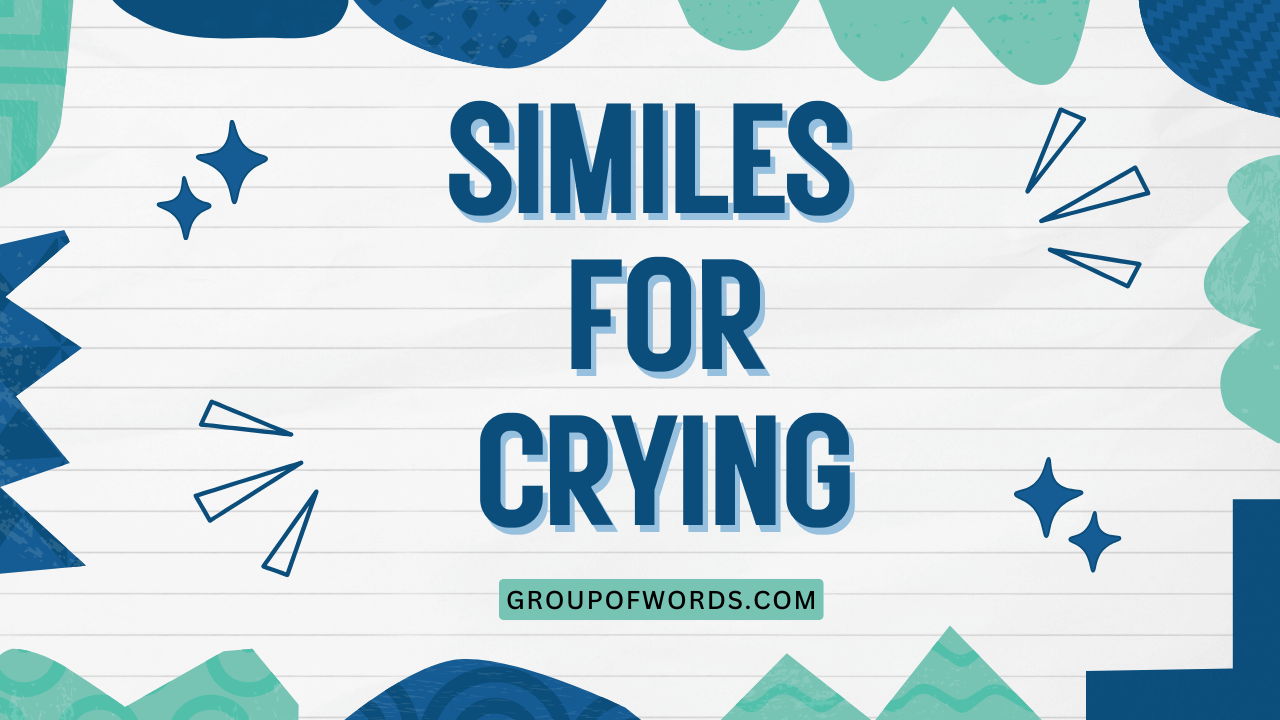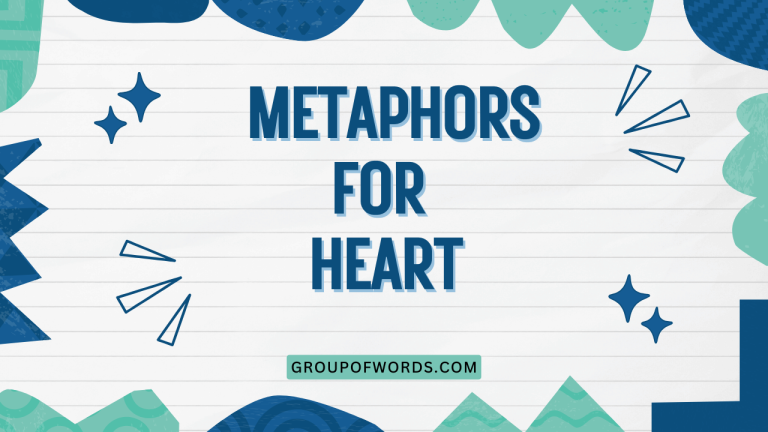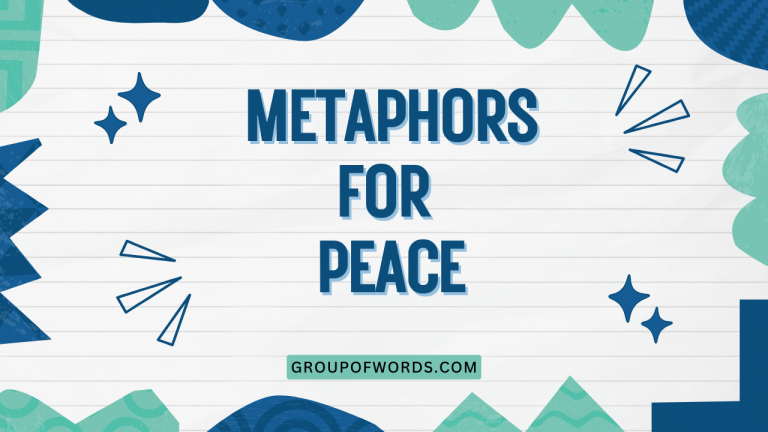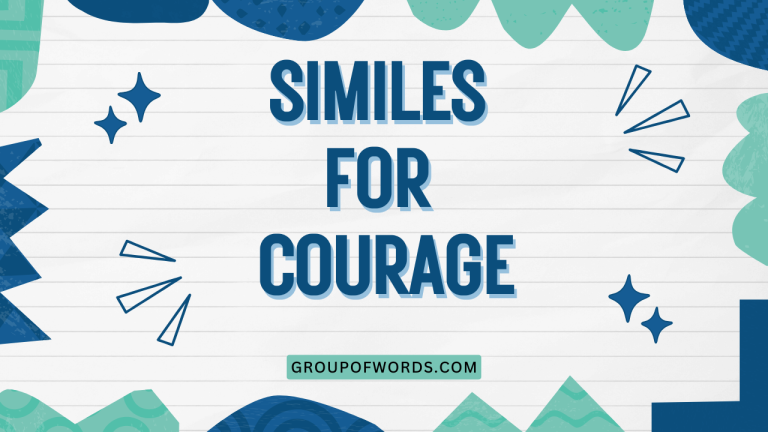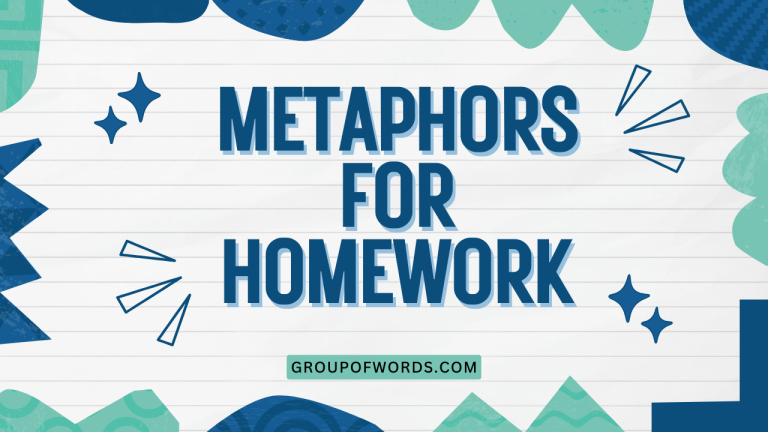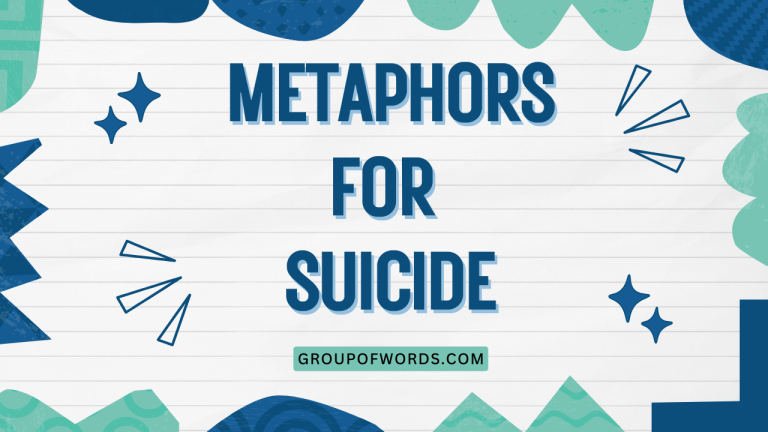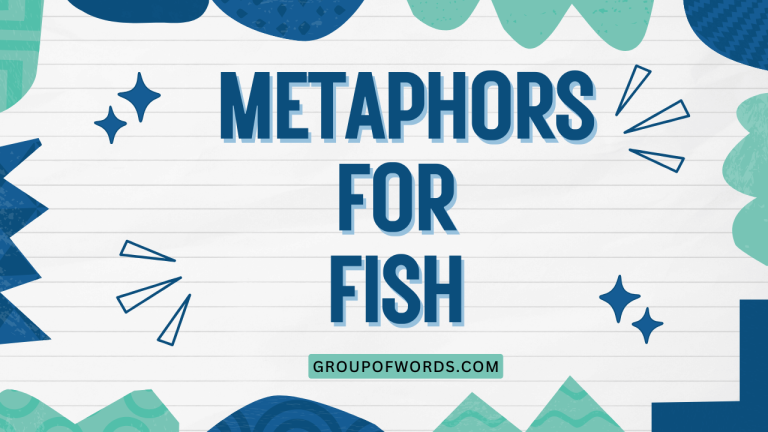Similes for Crying: A Comprehensive Guide to Expressing Sorrow
Expressing emotions vividly is a cornerstone of effective communication. When it comes to crying, a universal expression of sorrow, pain, or even joy, similes offer a powerful way to convey the intensity and nature of the tears.
This article delves into the world of similes for crying, exploring their definition, structure, various types, and practical usage. Whether you’re a student looking to enhance your writing skills, an ESL learner aiming to expand your vocabulary, or simply someone interested in the nuances of the English language, this guide will equip you with the knowledge and tools to describe crying in a more evocative and impactful manner.
This article will benefit English language learners, writers, and anyone interested in understanding the nuances of expressing emotions through language. By exploring various similes and their contexts, readers will gain a deeper appreciation for the power of figurative language and its ability to enhance communication.
Table of Contents
- Definition of Similes for Crying
- Structural Breakdown
- Types of Similes for Crying
- Examples of Similes for Crying
- Usage Rules
- Common Mistakes
- Practice Exercises
- Advanced Topics
- FAQ
- Conclusion
Definition of Similes for Crying
A simile is a figure of speech that compares two unlike things using the words “like” or “as.” Similes for crying, therefore, compare the act of crying or the tears themselves to something else, highlighting a shared characteristic or quality. This comparison helps to create a more vivid and relatable image in the reader’s mind, making the description of the crying more impactful.
The function of a simile is to add depth and color to writing. Instead of simply stating that someone is crying, a simile can convey the intensity, sound, or emotional weight of their tears.
This allows the writer to evoke a stronger emotional response in the reader and paint a more detailed picture of the scene.
Similes for crying can be used in various contexts, from literature and poetry to everyday conversation. They are particularly effective in situations where you want to convey a strong emotional impact or provide a more nuanced description of someone’s state of distress.
They can be used to describe the tears themselves, the sound of the crying, or the emotional state that is causing the tears.
Structural Breakdown
The basic structure of a simile is quite simple:
A (the subject being described) + like/as + B (the thing being compared to)
In the context of similes for crying, ‘A’ would be the act of crying, the tears themselves, or the person crying. ‘B’ would be something else that shares a characteristic with the crying.
For example:
- Her tears flowed like a river. (Tears are being compared to a river)
- He sobbed as if his heart would break. (Sobbing is being compared to a heart breaking)
The effectiveness of a simile depends on the aptness of the comparison. The more unexpected yet relevant the comparison, the more impactful the simile will be.
A strong simile creates a clear image and evokes a specific emotion.
Similes can also be extended, adding more detail and complexity to the comparison. This involves adding more descriptive words or phrases to either ‘A’ or ‘B’, or both.
For example:
- Her tears flowed like a river, unstoppable and relentless.
- He sobbed as if his heart would break, each sob a painful echo of his loss.
Types of Similes for Crying
Similes for crying can be categorized based on what aspect of the crying they are emphasizing. Here are some common types:
Similes Describing Quantity of Tears
These similes focus on the amount of tears being shed. They often use comparisons to bodies of water or other things that are known for their abundance.
Similes Describing the Sound of Crying
These similes focus on the sounds produced during crying, such as sobbing, wailing, or whimpering. They often use comparisons to other sounds that are similar in tone or intensity.
Similes Describing the Emotion Behind Tears
These similes focus on the underlying emotion that is causing the tears, such as sadness, grief, anger, or joy. They often use comparisons to other things that evoke similar emotions.
Similes Describing Facial Expressions During Crying
These similes describe the changes in facial expression that occur while someone is crying, such as a red face, contorted features, or trembling lips. They often use comparisons to other things that exhibit similar physical changes.
Examples of Similes for Crying
Here are some examples of similes for crying, organized by category. These examples will illustrate how similes can be used to create vivid and impactful descriptions of crying.
Examples Describing Quantity of Tears
This table shows various similes that describe the quantity of tears being shed. Notice how each simile uses a different comparison to emphasize the abundance or lack thereof.
| Simile | Explanation |
|---|---|
| Her tears flowed like a river. | Emphasizes a large, continuous flow of tears. |
| His eyes were like a leaky faucet. | Suggests a steady, but perhaps less intense, stream of tears. |
| She cried as if a dam had broken. | Implies a sudden and overwhelming release of tears. |
| The tears streamed down her face like rain. | Similar to a river, but perhaps more gentle and consistent. |
| His eyes welled up like overflowing pools. | Suggests a gradual build-up of tears before they spill over. |
| She wept like a willow, her tears soaking the ground. | Emphasizes the abundance of tears and the image of drooping sadness. |
| His tears were as sparse as rain in the desert. | Highlights the lack of tears, suggesting suppressed emotion. |
| She cried buckets of tears. | An informal way of saying she cried a lot. |
| The tears poured from his eyes like a waterfall. | Similar to a river, but with a stronger sense of force and volume. |
| Her eyes glistened with tears, like morning dew on a spiderweb. | Suggests a delicate and beautiful sadness. |
| Tears cascaded down his cheeks like a miniature Niagara Falls. | An exaggerated simile emphasizing a powerful and continuous flow. |
| Her crying released tears like a burst pipe. | Suggests a sudden, uncontrollable outpouring of emotion. |
| He shed tears as if draining a well of sorrow. | Implies a deep, seemingly endless source of sadness. |
| The tears trickled down her face like a slow, persistent leak. | Highlights a continuous, albeit gentle, flow of tears. |
| His eyes overflowed with tears, like a cup runneth over. | A biblical reference suggesting an abundance of grief. |
| She cried a sea of tears, enough to drown her sorrows. | An exaggerated simile emphasizing the vastness of her grief. |
| His tears fell like a gentle shower, soft and steady. | Suggests a comforting, cleansing release of emotion. |
| Her eyes produced tears as plentiful as the stars in the sky. | An expansive simile suggesting an overwhelming amount of sadness. |
| He cried as though he were summoning a flood with his tears. | An evocative simile emphasizing the potential destructiveness of grief. |
| The tears flowed down her face like molten silver. | A poetic simile emphasizing both the quantity and preciousness of her tears. |
| His eyes wept tears as abundant as grains of sand on a beach. | An exaggerated simile emphasizing the sheer number of tears. |
| She cried as though she were a rain cloud, heavy with moisture. | A metaphorical simile connecting her sorrow to a natural phenomenon. |
| His tears streamed down his face like threads of sorrow. | A delicate simile emphasizing the interconnectedness of tears and grief. |
| Her eyes released tears as unstoppable as a tidal wave. | A simile emphasizing the force and inevitability of her grief. |
| He cried as if his heart were a leaky bucket, unable to contain his sorrow. | A metaphorical simile emphasizing the impossibility of containing his emotions. |
Examples Describing the Sound of Crying
This table presents similes that focus on the sounds associated with crying. Each simile uses a different auditory comparison to convey the specific type and intensity of the sound.
| Simile | Explanation |
|---|---|
| Her sobs echoed like a wounded animal. | Suggests a raw, painful sound of distress. |
| His weeping was like the mournful cry of a lone wolf. | Emphasizes a sense of isolation and deep sorrow. |
| She cried as if her heart were a shattered bell. | Implies a broken, resonating sound of pain. |
| His sobs were like thunder in the quiet room. | Highlights the loud and disruptive nature of his crying. |
| Her whimpers were as soft as the rustling of leaves. | Suggests a quiet, gentle expression of sadness. |
| He wailed like a siren, his voice filled with anguish. | Emphasizes a loud, piercing cry of distress. |
| Her cries were as sharp as a knife. | Highlights the piercing and painful quality of her cries. |
| His sobs were like the creaking of an old door. | Suggests a strained and labored sound of crying. |
| She cried with a sound like a broken record. | Implies a repetitive and monotonous expression of sorrow. |
| His weeping was like the sound of a distant storm. | Suggests a building intensity of sadness and emotion. |
| Her sobs resonated like a cello’s mournful melody. | Connects the sound of crying to a beautiful, albeit sad, musical instrument. |
| His cries echoed through the room like the shattering of glass. | Implies a sudden, sharp, and destructive expression of grief. |
| Her weeping sounded like the gentle lapping of waves against the shore. | Suggests a soothing, rhythmic, yet persistent sadness. |
| His sobs were as deep and guttural as the roar of a lion. | Emphasizes the primal, uncontrollable nature of his grief. |
| Her whimpers were as delicate as the chirping of crickets. | Suggests a quiet, understated, and almost unnoticed sadness. |
| His wails pierced the silence like a banshee’s cry. | Connects the sound of crying to a mythical, haunting sound. |
| Her cries were as piercing as the shriek of a hawk. | Emphasizes the sharp, intense, and attention-grabbing quality of her cries. |
| His sobs resembled the groaning of an ancient tree in a storm. | Suggests a deep-seated, enduring, and powerful grief. |
| Her crying was as rhythmic as the ticking of a clock, marking the passage of sorrow. | Highlights the consistent, unwavering nature of her grief. |
| His weeping sounded like the wind howling through a desolate landscape. | Evokes a sense of loneliness, emptiness, and profound sadness. |
| Her sobs resonated like the echoes in a vast, empty cavern. | Implies a sense of loneliness, isolation, and overwhelming sadness. |
| His cries were as hollow as the sound of a distant train whistle. | Suggests a feeling of longing, loss, and unfulfilled desire. |
| Her weeping sounded like the gentle strumming of a sorrowful harp. | Connects the sound of crying to a beautiful, yet melancholic instrument. |
| His sobs were as ragged as the breaths of a marathon runner at the finish line. | Emphasizes the exhaustion, strain, and effort involved in suppressing grief. |
Examples Describing the Emotion Behind Tears
This table focuses on similes that describe the emotional state causing the tears. Each simile uses a comparison to something that evokes a similar emotion, allowing for a deeper understanding of the character’s feelings.
| Simile | Explanation |
|---|---|
| She cried as if her heart were breaking. | Emphasizes intense sadness and emotional pain. |
| His tears were like a release of pent-up anger. | Suggests that the tears are a result of suppressed frustration. |
| She wept as if she had lost her best friend. | Implies deep sorrow and grief over a significant loss. |
| His tears were like a balm to his wounded soul. | Suggests that the tears are a form of healing and relief. |
| She cried as if her world were crumbling around her. | Emphasizes a sense of overwhelming despair and hopelessness. |
| His tears were like a river of regret. | Suggests that the tears are a result of past mistakes or missed opportunities. |
| She cried as if her dreams had been shattered. | Implies deep disappointment and a loss of hope. |
| His tears were like a reflection of his deepest fears. | Suggests that the tears are a manifestation of underlying anxieties. |
| She wept as if she were carrying the weight of the world. | Emphasizes a sense of overwhelming responsibility and burden. |
| His tears were like a testament to his love. | Suggests that the tears are a result of deep affection and care. |
| She cried as though her spirit had been wounded. | Connects the tears to a deep, internal injury. |
| His tears were like a cleansing rain after a long drought of happiness. | Implies a release of pent-up sadness and a potential for renewal. |
| She wept as if her soul were mourning a profound loss. | Suggests a deep, spiritual connection to her grief. |
| His tears were like a silent scream of despair. | Emphasizes the intensity and frustration of his unexpressed emotions. |
| She cried as though her heart were being squeezed in a vise. | Implies an intense, constricting emotional pain. |
| His tears were like a floodgate opening to release years of suppressed sorrow. | Suggests a long-held grief finally being expressed. |
| She wept as if her innocence had been irrevocably stolen. | Implies a deep sense of violation and loss of purity. |
| His tears were like a bitter draught of reality. | Suggests a harsh awakening to a painful truth. |
| She cried as though her world had turned upside down. | Emphasizes a sense of disorientation, confusion, and loss of control. |
| His tears were like a fragile bridge connecting him to a lost past. | Suggests a longing for what once was and a difficulty in moving forward. |
| She cried as if her dreams had been extinguished like candles in the wind. | Implies a sudden, irreversible loss of hope and aspiration. |
| His tears were like a slow poison, seeping into his soul. | Suggests a gradual, insidious destruction of his inner peace. |
| She wept as if her heart were a shattered mirror, reflecting only fragments of her former self. | Emphasizes a sense of brokenness, identity loss, and self-doubt. |
| His tears were like a heavy cloak, weighing him down with sorrow. | Suggests a burden of grief that is difficult to bear. |
Examples Describing Facial Expressions During Crying
This table showcases similes that describe the physical appearance of someone crying, focusing on their facial expressions. Each simile uses a comparison to something that shares a similar visual characteristic, providing a vivid picture of the person’s distress.
| Simile | Explanation |
|---|---|
| Her face was as red as a tomato. | Emphasizes the flushed appearance of her face due to crying. |
| His eyes were swollen like puffy clouds. | Suggests the swelling around his eyes caused by crying. |
| Her lips trembled like a leaf in the wind. | Highlights the nervous and uncontrolled movement of her lips. |
| His face was contorted like a grotesque mask. | Emphasizes the distorted and unnatural appearance of his face. |
| Her eyes were as bloodshot as a road map. | Suggests the redness and visible veins in her eyes. |
| His face was pale like a ghost. | Highlights the loss of color in his face due to distress. |
| Her eyebrows were furrowed like a plowed field. | Emphasizes the deep lines of worry and sadness on her forehead. |
| His jaw was clenched tight like a vise. | Suggests the tension and suppressed emotions in his face. |
| Her face was wet with tears, like a flower after a rainstorm. | Emphasizes the abundance of tears and the delicate appearance of her face. |
| His eyes were like pools of sorrow. | Suggests the deep sadness and emotion reflected in his eyes. |
| Her face crumpled like a piece of paper. | Implies a sudden and complete breakdown of her composure. |
| His eyes were rimmed with red, like the edges of a fiery sunset. | Emphasizes the inflamed and irritated appearance of his eyes. |
| Her face was streaked with tears, like a canvas painted with sorrow. | Suggests the visible paths of tears running down her face. |
| His lips quivered like a frightened bird. | Highlights the delicate and involuntary movement of his lips. |
| Her eyes were glazed over, like windows fogged with mist. | Suggests a detached and unfocused gaze due to distress. |
| His face was etched with lines of grief, like the rings of an ancient tree. | Emphasizes the lasting impact of sorrow on his appearance. |
| Her cheeks were flushed like roses, a stark contrast to her sadness. | Highlights the physical manifestation of emotion despite her inner turmoil. |
| His eyes were dark and sunken, like deep wells of despair. | Suggests a profound and overwhelming sadness. |
| Her face was a mask of sorrow, frozen in a perpetual expression of grief. | Emphasizes the unchanging, overwhelming nature of her sadness. |
| His eyes were brimming with tears, like fragile bubbles about to burst. | Suggests the imminence of an emotional release. |
Usage Rules
When using similes, it’s important to ensure that the comparison is both meaningful and appropriate. Here are some rules to keep in mind:
- Choose relevant comparisons: The thing you are comparing to should share a clear and recognizable characteristic with the crying.
- Avoid clichés: Overused similes can sound unoriginal and lack impact. Strive for fresh and creative comparisons.
- Consider the context: The simile should be appropriate for the tone and style of your writing. A highly poetic simile might not be suitable for a technical document.
- Ensure clarity: The simile should be easy to understand. Avoid obscure or overly complex comparisons.
- Be mindful of cultural sensitivity: Some comparisons may have different connotations in different cultures.
The strength of a simile lies in its ability to create a vivid image and evoke a specific emotion. By following these rules, you can ensure that your similes are effective and enhance your writing.
Common Mistakes
Here are some common mistakes to avoid when using similes:
| Incorrect | Correct | Explanation |
|---|---|---|
| He cried like a house. | He cried like a baby. | The comparison is illogical. Houses don’t cry, but babies do. |
| Her tears were as water. | Her tears were like water. | Missing the word “like” is a common error. |
| He was crying simile a lot. | He was crying like a child who lost his mother. | “Simile” is not a substitute for the actual comparison. |
| She cried like happy. | She cried like she was heartbroken. | Similes need nouns or noun phrases after ‘like’ or ‘as’. |
Avoiding these common mistakes will help you use similes correctly and effectively.
Practice Exercises
Test your understanding of similes for crying with these exercises. Fill in the blanks with appropriate similes.
| Question | Answer |
|---|---|
| 1. Her tears flowed ________ a river. | like |
| 2. He sobbed as if his heart would ________. | break |
| 3. She cried ________ a wounded animal. | like |
| 4. His weeping was ________ the mournful cry of a lone wolf. | like |
| 5. Her face was as red ________ a tomato. | as |
| 6. His eyes were swollen ________ puffy clouds. | like |
| 7. She cried ________ her world was crumbling around her. | as if |
| 8. His tears were ________ a river of regret. | like |
| 9. Her lips trembled ________ a leaf in the wind. | like |
| 10. His face was contorted ________ a grotesque mask. | like |
More Practice Exercises:
Rewrite the following sentences using a simile to describe the act of crying.
| Question | Answer |
|---|---|
| 1. She cried a lot. | She cried like a dam had broken, releasing a torrent of tears. |
| 2. He was very sad and cried. | He cried as if his soul were mourning a profound loss. |
| 3. Her face turned red when she cried. | Her face was as red as a tomato as she cried. |
| 4. He made a lot of noise when he cried. | His sobs were like thunder in the quiet room. |
| 5. She felt a lot of pain and cried. | She cried as if her heart were being squeezed in a vise. |
| 6. The tears streamed down his face. | The tears streamed down his face like rain. |
| 7. His eyes filled with tears. | His eyes welled up like overflowing pools. |
| 8. She was crying quietly. | Her whimpers were as soft as the rustling of leaves. |
| 9. He was crying loudly. | He wailed like a siren, his voice filled with anguish. |
| 10. She showed a lot of emotion when she cried. | She cried as if her dreams had been shattered. |
Advanced Topics
For advanced learners, consider exploring the use of extended similes and metaphors in describing crying. Extended similes develop the comparison over several sentences or paragraphs, creating a more complex and nuanced image.
Metaphors, on the other hand, directly equate the crying to something else, without using “like” or “as.”
Also, explore the use of personification in describing tears, giving them human qualities and actions. For example, “The tears danced down her cheeks.”
Consider the cultural and historical context of similes for crying. Different cultures may have different ways of expressing sadness and grief, and this can be reflected in their use of figurative language.
FAQ
Here are some frequently asked questions about similes for crying:
- What is the difference between a simile and a metaphor?
A simile compares two things using “like” or “as,” while a metaphor directly equates two things without using those words. For example, “Her tears were like a river” (simile) vs. “Her tears were a river” (metaphor).
- How can I make my similes more creative?
Think outside the box and try to find unexpected but relevant comparisons. Consider using sensory details to make your similes more vivid. Read widely and pay attention to how other writers use figurative language.
- Are there any similes for crying that I should avoid?
Avoid clichés and overused similes, such as “crying like a baby.” These can sound unoriginal and lack impact. Also, be mindful of cultural sensitivities and avoid comparisons that may be offensive or inappropriate.
- How do I choose the right simile for a particular situation?
Consider the context, tone, and style of your writing. Think about what aspect of the crying you want to emphasize (quantity, sound, emotion, facial expression) and choose a simile that reflects that aspect. Make sure the comparison is clear, relevant, and appropriate.
- Can I use similes for crying in formal writing?
Yes, but use them sparingly and thoughtfully. In formal writing, it’s important to maintain a professional tone. Choose similes that are subtle and sophisticated, rather than overly dramatic or emotional.
- How can I improve my understanding of similes in general?
Read widely and pay attention to how different authors use similes. Practice writing your own similes and ask for feedback from others. Study lists of common similes and try to come up with your own variations. Also, consider taking a class or workshop on creative writing.
- What role do similes play in conveying emotion in literature?
Similes provide a powerful tool for writers to evoke emotion in their readers. By comparing abstract feelings, such as grief or sorrow, to concrete images or sensations, similes make these emotions more accessible and relatable. They allow readers to connect with the characters and experience their feelings on a deeper level.
- Are similes for crying universal, or do they vary across cultures?
While the act of crying is universal, the specific similes used to describe it can vary significantly across cultures. Different cultures may have different ways of expressing sadness and grief, and these cultural nuances can be reflected in their use of figurative language. It’s important to be aware of these cultural differences when using or interpreting similes for crying.
Conclusion
Mastering the art of using similes for crying can significantly enhance your ability to express emotions vividly and effectively in your writing. By understanding the structure, types, and usage rules of similes, you can create powerful images and evoke strong emotional responses in your readers.
Remember to choose relevant comparisons, avoid clichés, and consider the context of your writing.
Continue to practice using similes in your writing and pay attention to how other writers use them. With time and effort, you’ll develop a strong command of this valuable literary device and be able to describe crying in a way that is both impactful and memorable.
By incorporating these techniques, you can elevate your writing and captivate your audience with your descriptive prowess.
